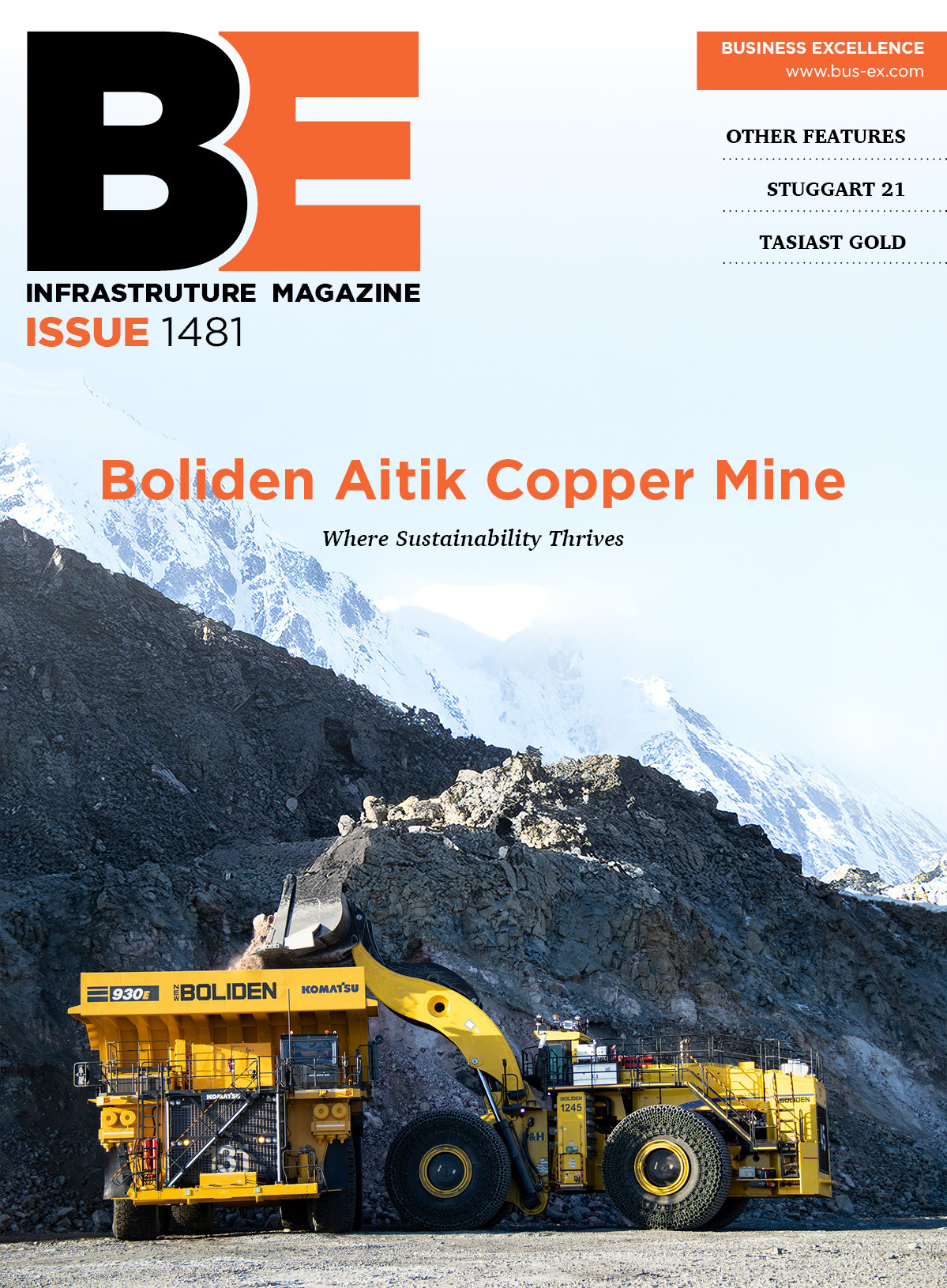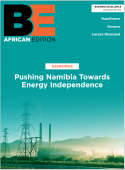Performing assetsStephen R. Brunner shares with Martin Ashcroft his strategy for turning Constellation Energy Partners into a top performing oil and gas production company. Stephen Brunner was appointed chief operating officer of publicly held Constellation Energy Partners LLC in February this year. Before the end of March, the roles of president and CEO were added to his responsibilities. ÔÇ£It happened sooner than I thought,ÔÇØ admits Brunner modestly, ÔÇ£but it was all part of a longer term plan to prepare the company for sustainability and future growth.ÔÇØ Constellation Energy Partners (CEP) is a growth-oriented oil and gas company focused on the acquisition, development and production of long-lived oil and natural gas properties. At the time of its IPO in November 2006, all its assets were concentrated in the Black Warrior Basin in Alabama. Three acquisitions followed in 2007 in the Cherokee Basin in Oklahoma and Kansas totaling $483 million and doubling its estimated proved reserves and daily net production. At the same time as Brunner arrived, CEP acquired a non-operating interest in an asset in the Woodford Shale, giving the company a foothold in a third basin and further expanding the companyÔÇÖs presence in the mid-continent region. The expansion over the last year required the company to focus on asset integration and operation.Integrating and operating these newly acquired assets as one portfolio required leadership with a broader experience. The company looked to Brunner, a veteran with a deep technical background and over 25 years in the industry, and most recently as executive vice president of operations for Texas-based Pogo Producing Company.ÔÇ£I was brought in because they recognized they needed more exploration and production experience in the management team,ÔÇØ says Brunner, whose career also includes periods with Chevron and Tenneco. ÔÇ£IÔÇÖve had the benefit of varied experiencesÔÇöI came up as an engineer and have spent much of my career with major companies. I have worked on the technical and the business side in the United States and around the world, and I have experience with conventional and unconventional resource plays, providing me with a broad technology depth.ÔÇØBrunnerÔÇÖs first assignment was to assess the asset base and current operations. ÔÇ£I came on board to determine which direction the company needed to go, form a strategic plan, and then translate that into a tactical plan to successfully execute across the portfolio and deliver on our commitments to our investors,ÔÇØ he says.Brunner quickly assessed what the company neededÔÇö increasing focus on operations with a build-out of the operations teams, capturing the potential upside value inherent in the asset base, accelerating value realization through potential partnerships with other proven operators and, lastly, delivering continued portfolio growth through additional acquisition efforts. This plan was widely accepted and quickly propelled Brunner into the additional roles of president and CEO.That sounds like a tall order, but Brunner had a few things in his favor. ÔÇ£It was obvious to me it was a great asset base, and we had some very good people,ÔÇØ he says. ÔÇ£The biggest challenge was that we didnÔÇÖt have enough people for the integration and we needed to hire to fill some critical skills gaps. And with three different organizations, it takes some time to get the team integrated and aligned to the goals of the new organization.ÔÇØWe executed some leadership changes and weÔÇÖve spent a lot of time in the field helping the personnel to understand the goals of the company and how the elements of their jobs tie in to the success of the company and the E&P MLP model. The skills were there. Now the alignment is there, tooÔÇØ says Brunner. ÔÇ£The teams are active in the decision-making process and they understand that driving production is their ultimate focus.ÔÇØPrimarily a coalbed methane producer, Constellation Energy Partners is a limited liability company with an E&P MLP (exploration and production master limited partnership) structure, a status available only to natural resource and some real estate companies. The E&P MLP structure combines the tax benefits of a limited liability company with the advantages of a publicly-traded company. ÔÇ£We have far less capital to reinvest than a normal corporation because we make significant distributions to our unitholders,ÔÇØ explains Brunner, ÔÇ£so we need a portfolio of assets that lends itself to stability with limited capital commitment. Specifically, the portfolio should consist of long-lived stable producing properties with higher percentages of proved developed reserves. Our portfolio aligns to this profile with a reserve life of about 18 years and proved developed reserves of about 62 percent.ÔÇØ From an operational point of view, he continues, it is critical to have lower-risk, low cost drilling opportunities. ÔÇ£In the Cherokee and Black Warrior Basins we have over three thousand opportunities like that, allowing us to offset the portfolio decline rates, keeping production levels flat, and when appropriate, delivering moderate organic growth to the portfolio.ÔÇØ By low-risk, he means more than simply the risk of drilling and finding nothing. ÔÇ£We have a very simple operating environment, which keeps our cost structure low,ÔÇØ he says. ÔÇ£Everything we do is shallower than 3000 feet; we have a low pressure environment, so we donÔÇÖt need complex and expensive equipment. WeÔÇÖre essentially drilling what in some areas of the country would be comparable to water wells. We drill to the coalbed methane, we complete them, we install pumping units, we pump the water off and we start pumping the natural gas to the various sales points through our infield gathering lines. The process is simple to execute and very repeatable. In E&P terms, they refer to this as a manufacturing operation.ÔÇØ When three companies come together, thereÔÇÖs obviously some synergy to take advantage of, he points out. Each property had previously been operating independently, but is now part of a unified whole. ÔÇ£We have taken a portfolio approach to our assets,ÔÇØ says Brunner, ÔÇ£because we care about the whole portfolio performing well, not just pieces of it. In the Cherokee Basin, we manage the three acquired assets as one core area of the portfolioÔÇöand weÔÇÖve already made some small infrastructure changes and pressure realignments for compression, all of which have improved production in the range of one and a half million cubic feet per day.ÔÇØBrunner also wants his teams to focus on extracting value by using technology improvements. When he reviewed the Cherokee Basin assets with the technical team, he was pleased to find they had done some experiments with horizontal drilling. ÔÇ£Typical completions in the Cherokee Basin (and most coalbed methane basins) are small vertical completions with small fracs,ÔÇØ he explains. ÔÇ£But when your coals have good permeability, it can make more sense to drill fewer wells and connect up the coal with a horizontal well-bore instead of a lot of vertical completions.ÔÇØ Brunner explains that the increase in shale gas production in the US in recent years, where a significant amount of horizontal technology is required to access the resource, has resulted in the costs of employing this technology coming down and the quality of the equipment improving, ÔÇ£so weÔÇÖre benefiting from a lot of work that has already been done.ÔÇØThe teamÔÇÖs experiments in the Cherokee Basin had seen some success, but had also had some failures. ÔÇ£Each basin is unique,ÔÇØ says Brunner. ÔÇ£Each resource has particular characteristics that lend themselves to one type of completion or another, and quite frankly, itÔÇÖs as much art as it is science. You just have to work through your failures to understand how to adjust your methods based on what you learn.ÔÇ£After some brain-storming with the team, we came up with a horizontal pilot program in the Cherokee Basin and we are having some very promising results. We can drill for about the same cost as a vertical completion because we use vertical drilling as the starting point for a horizontal well, and if the well is a good candidate for horizontal application, we drill the horizontal leg of the well instead of doing the frac for the vertical.ÔÇØ A typical vertical completion produces 50 to 70 mcf a day (thousand cubic feet). The company now has some horizontal completions producing twice as much as vertical completion. ÔÇ£If you can find a way to use technology that will more than double your production, itÔÇÖs always going to get your attention if youÔÇÖre focused on present value, which this management team is,ÔÇØ says Brunner. ÔÇ£We expect to have a better view into results by the end of the year, but we think we may have a chance to double net present value from each investment we make like that. It doesnÔÇÖt mean every well we drill can be a horizontal well, but we see a lot of opportunities in the Cherokee Basin, and we are looking at how to incorporate a broader horizontal drilling program into the portfolio, including the Black Warrior Basin.ÔÇØ Something else Brunner noticed about the asset base was that there were hundreds of thousands of acres that the company would not be able to exploit on its own. He views the ample number of drilling opportunities as a key element to providing production stability and moderate growth. ÔÇ£But to exploit the undeveloped acreage on our own would be unacceptable because of the capital commitment involved in such an effort. We need to be creative to accelerate additional value.ÔÇØBrunner and his team are looking at potential partnership opportunities to do that. ÔÇ£We intend to leverage the asset base by using capital from financially sound partners to develop some of these areas that we just canÔÇÖt get to ourselves,ÔÇØ he says. ÔÇ£Beyond the coalbed methane present on our acreage, we also have some conventional oil and gas opportunities from sandstone and limestone deposits. In the eastern side we even have a shallow Woodford Shale potential. Using partnership structures to exploit our assets lends itself to adding additional value while operating within the parameters of the E&P MLP structure.ÔÇØ While much of 2008 will be focused on the many initiatives Brunner outlined upon his arrival, CEP is always looking at possible acquisitions to drive further portfolio growth and replicate its success by adding other well-suited assets to its portfolio.┬á ┬á









